
by Grow Up Conference | Dec 7, 2024 | Media Partners, Stratcann
This week at StratCann, the biggest news was probably Organigram acquiring Motif Labs, followed by the release of Health Canada’s 2024 Canadian Cannabis Survey.
We also spoke with the OCS’ Dr. Jenna Valleriana about mindful cannabis use over the holidays and looked into a recent amendment to PEI’s vaping legislation.
On December 1 we dropped our monthly cannabis jobs report, and we spoke with a group seeking to enrol 1,000 Canadian medical cannabis patients for an observational study.
In financial news, Nova Scotia sold $32.6 million worth of cannabis in Q2 2024, High Tide is expanding its Cabana Club to an international market, and a judge rejected Final Bell’s equity claims against BZAM monitor, extending the stay of proceedings once again.
In other cannabis news
Niagara College is studying electrical conductivity and its importance in producing healthy, happy cannabis plants.
The College of Physicians and Surgeons of Manitoba (CPSM) is asking its members to review the recent updates from Health Canada regarding authorized cannabis for medical use. The memo notes that Health Canada may contact CPSM registrants directly to request evidence supporting the amount of cannabis authorized for a particular patient.
Almost five months into its court-appointed receivership, Delta 9 Cannabis Inc. creditors will have a chance to vote on the Manitoba company’s plan of arrangement later this month, reports the Winnipeg Free Press. SNDL Inc., which holds about $40 million in secured debt, will be paid in full. Co-founder John Arbuthnot said a deal should be closed on Delta 9’s 100,000-square-foot cultivation hub (with its 297 production pods) by mid-January. In November, Delta 9 selected a bidder for 17 of those grow pods.
Pure Sunfarms announced a new infused 2.1 gram Canna Czar twax blunt from Soar.
Avicanna Inc. announced the initial delivery of its topical products into Europe as a part of a previously announced exclusive supply agreement with a multinational pharmaceutical company. The company plans to launch products in six European countries during 2025 with expectations of further expansion throughout the European region shortly after. The products use CBD and CBG from Avicanna’s majority-owned subsidiary, Santa Marta Golden Hemp S.A.S., in Santa Marta, Colombia.
Canopy Growth Corporation will complete its acquisition of Acreage Holdings on or around December 9, 2024, subject to the satisfaction or waiver of certain closing conditions.
Canopy also announced the launch of two holiday-inspired cannabis products from Tweed, including a sugar-free Cranberry Ginger Ale and Tweed Snowtorious 91K flower.
Several media outlets ran a story on new products available at the OCS for the holidays.
The New Brunswick Telegraph Journal ran a piece on the testing results of cannabis vape pens (covered by StratCann in October) by RPC in New Brunswick. The article also includes new comments regarding ongoing questions in the province around jurisdictional authority for the province’s retail regulations, with comments from former NB public safety minister Kris Austin, RCMP Cpl. Hans Ouellette, and Health Canada.
Rubicon Organics Inc. announced that it has entered into credit agreements where it has borrowed an aggregate of $10 million from Community Savings Credit Union and another lender.
Decibel Cannabis Company Inc. received final acceptance from the TSX Venture Exchange for its previously announced acquisition of AgMedica Bioscience Inc.
A causality analysis of legal recreational cannabis sales and opioid-related mortality in the five years following cannabis legalization in Canada found no support for that hypothesis while looking at British Columbia, Ontario, or at the national level.
Halifax CBSA officers seized a suitcase containing 20 kilograms of cannabis on a flight to the UK on Monday, December 2, and arrested an Ontario man, Alessandro Pinchera, 21, of Richmond Hill.
International cannabis news
Many people again gathered in Las Vegas during the annual MJBizCon.
The USDEA’s hearings on cannabis rescheduling will begin on January 21, 2025, continuing through March 6, meeting twice a week save for a one-week break in February. Presenters will include Village Farms International, the parent company of Pure Sunfarms in Delta, BC.
Queensland doctors and pharmacists want medicinal cannabis removed from the special access scheme, saying the pathway is being used to bypass TGA assessment. The letter was co-signed by AMA Queensland, the state branches of the Pharmacy Guild of Australia, and RANZCP, reports AusDoc.com.
Uruguay’s Cannabis Regulation and Control Institute (IRCCA) is recruiting a junior lawyer for its legal team.
Politico spoke with Brian Hanna, executive director of Michigan’s Cannabis Regulatory Agency, on the successes and challenges of the state’s legalization efforts, five years in. And finally, Texas Governor Dan Patrick announced he’s launched a legislative initiative to ban all THC being sold in Texas.
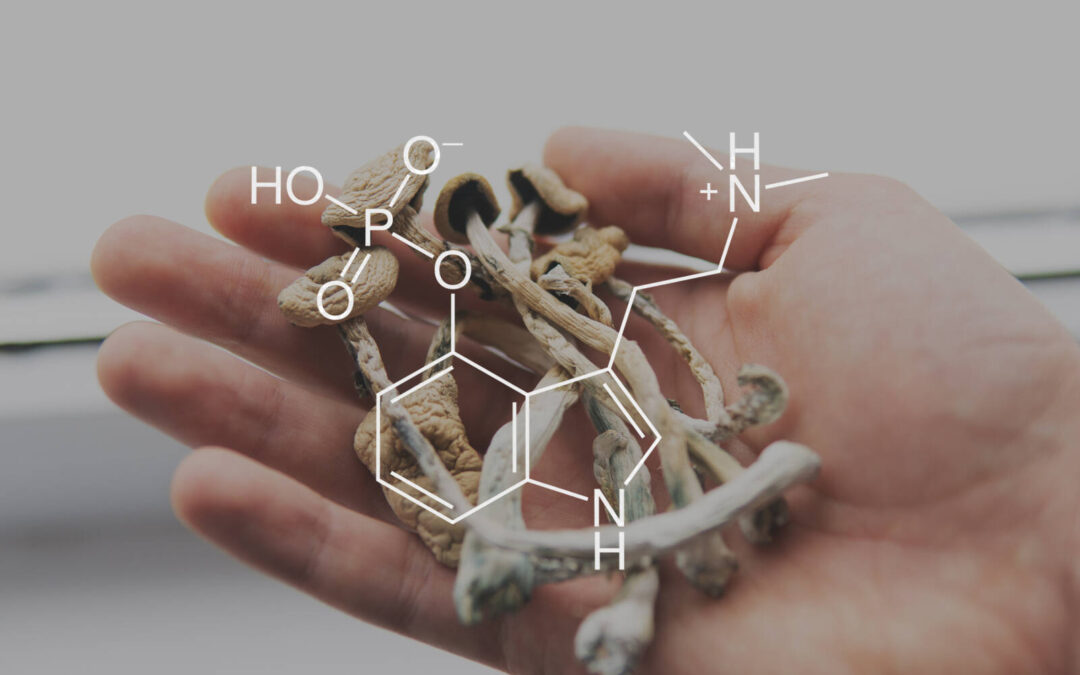
by Grow Up Conference | Dec 7, 2024 | Canadian Evergreen, Media Partners
Drug reform advocates hailed Oregon as a progressive leader when it became the first in the nation to legalize the therapeutic use of psilocybin, the compound found in psychedelic mushrooms.
But four years later, voters in a growing list of its cities have banned the substance.
Four cities, spanning Portland suburbs and rural and coastal towns, added new voter-approved prohibitions for the federally illegal compound in the Nov. 5 election. A dozen other communities that approved two-year moratoriums in 2022, when a majority of Oregon counties and over 100 cities voted to temporarily or permanently ban psilocybin, voted in this election to make the restrictions permanent.
In the wake of the fentanyl crisis, the rejection of drug liberalization measures in Oregon and states across the country this election has some experts questioning whether voters are rethinking their appetite for such policies.
In Massachusetts, for example, voters rejected a measure that would have allowed residents over 21 to grow and use plant-based psychedelic drugs in certain circumstances. All three states that had measures to legalize recreational marijuana voted against it.
Oregon voters, in particular, appear to have soured on drug reform. A law passed by voters four years ago that decriminalized the possession of small amounts of hard drugs, including heroin and methamphetamine, was rolled back by the state legislature earlier this year after heated debate over whether it played a role in a spike in public drug use and deaths.
“Perhaps the fact that the drug policy reform pendulum appears to be swinging back towards prohibition is part of a broader trend toward a preference for ‘law and order’ among American voters,” said Josh Hardman, founder of Psychedelics Alpha, a consulting firm and newsletter on psychedelic research, business and policy. “Oregon, specifically, has been touted as an example of liberal drug policies gone wrong.”
Despite the local bans, psilocybin remains accessible in over 30 licensed centres spanning the state’s most populous cities, like Portland, and a handful of small towns. Some rural counties also have voted to stay in the program.
However, access to therapeutic psilocybin is further complicated by high costs: One session can be up to $2,000 out of pocket. That is largely because centre owners and facilitators have to pass on licensure expenses to consumers in order to stay afloat.
MJ Wilt, who just opened a licensed centre in the Portland suburb of Gresham, spent tens of thousands of dollars of her own savings to get licensed and establish her centre. It’s been hard, she said, because her own experience with psilocybin changed her life for the better and she wants to bring that experience to others.
“The cost for the program has been astronomical and is not accessible to people across the socioeconomic spectrum,” Wilt said. “It’s certainly not the cash cow that people think or thought it was going to be.”
In 2020, roughly 56 per cent of Oregon voters approved Measure 109, which allowed for the manufacture and controlled, therapeutic use of psilocybin at licensed facilities for those over 21. But the measure allowed counties and cities to vote to opt out, resulting in a patchwork of regulations across the state.
Adding to the complexity, some cities have voted to allow psilocybin despite being in counties that banned it, as cities control the land incorporated within their borders while counties control unincorporated land.
The regulatory patchwork resembles that of cannabis law. In half of the 24 states that have legalized recreational cannabis, including Oregon, localities may opt out of most types of cannabis businesses, according to Kate Bryan, a policy specialist on criminal and civil justice at the National Conference of State Legislatures.
Colorado in 2022 became the only other state to legalize psilocybin for therapeutic use. It will begin accepting license applications for “healing centres” at the end of December, a spokesperson for the state’s natural medicine division said in an email. The law allows localities to adopt certain regulations regarding how the centres operate, but it does not allow them to ban such centres entirely.
Multiple cities across the country also have voted to decriminalize psilocybin, meaning a person cannot be arrested or prosecuted for possessing limited amounts of plant-based hallucinogens.
Psilocybin, found in several species of mushrooms, can cause hours of vivid hallucinations. Indigenous people have used it in healing rituals, and scientists are exploring whether it can help treat depression, addiction and post-traumatic stress disorder. Researchers and military veterans are among those who have advocated for the study of the substance for therapeutic use.
Kat Thompson, the founder and CEO of Fractal Soul, a licensed psilocybin centre in the Portland suburb of Beaverton, said her centre has served 400 people in its first year and that the “vast majority” have had positive outcomes. Many come seeking help for depression, anxiety, trauma and addiction after years of trying talk therapy and medication, she said, while others come to process grief or explore their spirituality.
But she said a lack of public awareness about the state’s psilocybin program has led many to confuse it with Measure 110, the separate ballot measure also passed in 2020 that decriminalized the possession of small amounts of drugs. The botched implementation of the law — also a first of its kind in the nation — and rising overdose deaths amid the fentanyl crisis fueled pushback that prompted state lawmakers to backtrack on it earlier this year.
“We actually got lots of calls from people who had booked sessions with us who heard about the roll back of 110 and thought that that meant that we were closing,” Thompson said. “So we’ve had to explain and educate the public that Measure 110 was really just about decriminalization for personal use. It has nothing to do with the professional therapeutic model.”
Some people also confuse the model of the psilocybin centre with cannabis dispensaries. At dispensaries, people buy cannabis and leave to consume it elsewhere. People who want to use psilocybin, meanwhile, must consume it at a licensed service centre under the supervision of a licensed facilitator who administers it to them and remains with them for the duration of the trip, Thompson said.
“This is essentially a mental health clinic where someone is here all day with us,” she said. “By and large, it is extremely safe.”
Of the over 16,000 doses that have been administered since the first licensed centre opened in June 2023, staff at such centres have called 911 or taken a patient to a hospital five times, an Oregon Health Authority spokesperson confirmed in an email. There are roughly 350 licensed facilitators and a dozen psilocybin manufacturers in the state, according to the agency’s most recent figures.
Joe Buck, the mayor of Lake Oswego, a Portland suburb that just passed a psilocybin ban, said he wasn’t surprised by the outcome, even though a majority of the city’s residents supported Measure 109 in 2020.
“Oregon really has not done a great job managing its drug policy,” he said. “So I can understand how some people may be wary of the promises that are now being made around psilocybin.”
But further research on psilocybin, he said, could change voters’ perspective in the future.
“It really is up to state leaders, leaders in the federal government, to work these drugs through a good system that builds community trust.”
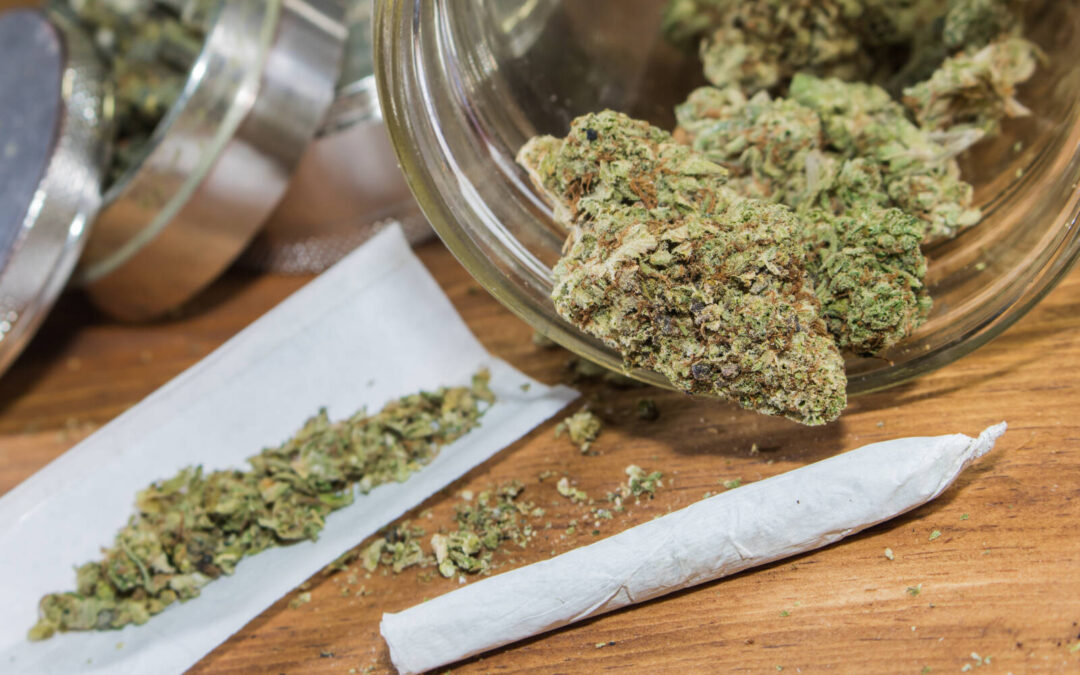
by Grow Up Conference | Dec 7, 2024 | Canadian Evergreen, Media Partners
Health Canada has released its 2024 Canadian Cannabis Survey, shedding light on Canadians’ evolving attitudes, knowledge and behaviours surrounding cannabis use.
Conducted between April 4 and July 2, 2024, the survey highlights key trends, including shifts in consumption methods, purchasing habits, and public health impacts since cannabis legalization.
Key findings:
Smoking decline: While smoking remains the most common consumption method (69 per cent), its prevalence has declined. Edible cannabis products (57 per cent) and vape pens (37 per cent) continue to grow in popularity.
Shift to legal sources: In 2024, 72 per cent of respondents reported obtaining cannabis from legal sources, a sharp increase from 37 per cent in 2019. Legal storefronts have remained the primary source since 2019, with only 3 per cent of users accessing cannabis illegally.
Safer driving trends: Reports of driving after cannabis use dropped significantly, from 27 per cent in 2018 to 18 per cent in 2024.
Stable youth use rates: Cannabis use among youth aged 16 to 19 has remained steady at around 41 per cent over the past several years.
Daily use patterns: Approximately 25 per cent of cannabis users reported daily or near-daily consumption, a figure that has been stable since 2018, including among youth (20 per cent).
Public health focus
Health Canada has implemented targeted educational campaigns to address cannabis-related risks, particularly for youth and young adults whose brains are still developing. These efforts include youth education programs and community outreach.
This year’s survey added new topics, including the ease of access to cannabis from legal and illegal sources, usage of pre-rolled and infused joints, and consumption patterns for edibles.
The 2024 CCS collected responses from 11,666 Canadians aged 16 and older across all provinces and territories.
To get the week’s latest must-read stories from the cannabis world direct to your inbox, sign up for our weekly newsletter at canadianevergreen.com. You can also follow us on Facebook, Instagram and Twitter.

by Grow Up Conference | Dec 6, 2024 | Media Partners, The New Agora
You Only Have One Inalienable Right
A Rant By
Cognitive Dissonance
I don’t normally publish my rants. By definition they are an excess of emotion regardless of how truthful or logical they may be. If one cannot master his or her emotions, ultimately one is a slave to them.
On occasion I become frustrated and choose to vent rather than let it stew inside. I have learned it is best to let it all go, lest I be consumed by anger, resentment and righteous indignation.
For some reason I have decided to post this one. Don’t ask me why because I could not answer logically.
Cognitive Dissonance
At what point are we solely and personally responsible for everything and anything that’s going on in our lives? As far as I’m concerned that’s the only question we must ask, and answer, if we are to begin to break the chains that bind us to our socioeconomic co-dependence and psychological victim hood.
What’s that you say? You aren’t a victim or codependent? Most of us who feel we are put out, encumbered or even assaulted don’t see our condition as self imposed other than possibly, maybe, somewhat incidentally. Rather, we perceive ourselves as clear thinking innocent bystanders being trampled and imposed upon by outside forces through no fault of our own.
The one and only inalienable right we have in this screwed up world, this mess of a hell hole, is the right to be curious, probing, inquisitive, to crave knowing more, to posses the desire to learn, to grow, to mature, to move forward rather than just tread water or sink silently beneath the surface and into the abyss.
To be perfectly frank I am a bit tired of hearing the futile bleating of the captured slave mind as it bemoans its sorry state of affairs. I didn’t know, no one told me, how was I supposed to know, it’s not my fault, I wasn’t taught, you made me (fill in the blank), you didn’t do your part so why should I do mine etc. This is the cry of the confined cranium, the deaf, dumb and blind, the sole surveyor of the empty space of our terminally closed minds.
And lest the reader mistake my rant to be directed exclusively towards the sensitive snowflake, social justice warrior and smug self righteous liberal, there are presently many classes of arrested development that result from different toxic ingredients and divergent formula. There’s more than one way to create a blind mind’s eye and it isn’t exclusive to a particular political, religious or social point of view.
An intellect closed to any and all alternatives is clogged regardless of the method of stoppage employed. This applies in particular to those who claim themselves unorthodox in mind, body or spirit, a minority of the minority. There is no one path to ‘truth’ reserved for the so called enlightened and self declared morally and intellectually superior…this author included.
I speak, of course, of those populating the political ‘right’ who ‘know’ with unwavering certainty we possess purity of mind and ideological wholesomeness. Having recently affirmed our righteous indignation with the election of a multi billionaire of egoic proportions as savior first class, we now anxiously await the latest chapter of the endlessly staged political play.
Carefully hedging all of our captured minds by claiming the lesser of two evils (anyone but the war mongering liberal) the hypocritical force runs no less deep in the alt-right than the radical-left. And let’s not forget the so-called ‘middle’ where everyone claims they actually reside.
Let’s see if I’ve got this straight. The swamp monster himself, hailing from the better side of town but still stinking of marsh gas, has been tasked with the job of draining the fetid bubbling swamp. One of the elite swears fealty to the great unwashed, says all the ‘right’ things and is righteously rewarded with the keys to the castle with the promise to thoroughly clean house?
Are you kidding me?
Whoever said the hopelessly naïve are a danger to themselves and all others is spot on with the accurate assessment of our fawning slave mentality. Sadly I’m being tragically generous when I say naïve, since only total delusional thinking of the brain dead kind would convince anyone the way forward entails more of the same backward insanity. Just because the flavor is now Chocolate Cheesecake or Raspberry Ripple doesn’t make it any less the exact same ice cream we’ve all been previously served.
And yet “We the People” fall for it every single time. Why do we blame ‘them’ for manipulating us if it’s always successful? The answer is embarrassingly simple; because it’s intellectually easier and emotionally safer then examining our own complicity.
Then again, anything is better than being forced to assume ultimate authority for our own psychological and ideological well being. The big lie of personal salvation is alive and well in the closed minds of the corralled herds. There is no political savior waiting in the wings, no mighty being ready to swoop in and save us from ourselves. But isn’t it deliciously decadent to once again ‘believe’ with all (OK, maybe just half of) our heart and soul after a long bout of forced abstinence. The Candy man’s here and he makes the world taste good.
But of course we’re not one of those brain dead walkers because we don’t really believe. In fact we’re just waiting to see how the game plays out before we show our cards and play our hand. Naturally, that might take four more years of assessment before we can truly tell which way the political wind blows. But we will feel gloriously self righteous while we wait…or at least smug as a conservative bug.
Face it folks, we’ve been had; pumped and humped by Trump and ultimately by our own hand. It doesn’t matter who ascends to the throne so long as divide and control is the goal and the King’s court is sated. For as long as we deflect personal responsibility and then divide into different ideological tribes to affirm our choice, we can always be effectively leveraged against each other to the ultimate detriment of the greater good and the individual, sovereign or not.
My position is simple. While whoever ascends the throne can definitely effect substantial changes upon our daily living conditions, ultimately it is the King’s Court who rules the land through the King’s hand. Meaning the true power is not in the King, but behind and around the King. And that power is not interested in enriching and empowering you and me. In fact, the intent is to do just the opposite.
In my opinion the Great American Experiment is over, and has been for several decades now. What we are presently experiencing is a runoff of momentum and kinetic energy. Similar to the need for several miles of running room for an aircraft carrier or large ocean liner to slow down and stop, or more accurately to turn around, the American plantation is in the process of changing and it takes time to turn the slave ship of state, particularly if the King’s court wishes to maintain relative peace and productivity within the ranks of the proles while doing so.
But turn it is and turn it will.
So what do you and I do? From my point of view, the process is obvious and self evident. But it requires careful self examination and rigorous honesty, a process the vast majority will reject outright because it implies so much if fully accepted and internalized. It probably doesn’t help when I use harsh and inflexible terms to describe our collective socioeconomic condition. In my defense we desperately crave veiled innuendo and sweetened rhetoric to enable our continuing denial. Sorry, but I won’t be a party to that.
If we are a functioning (more accurately described as ‘productive’) member in today’s modern ‘culture’, meaning we have jobs and loans and cars and homes, to some extent we all share a collective and individual slave mentality. It is inescapable and a condition of cooperation and participation in today’s socioeconomic reality. The only real question one must ask is where in the slave hierarchy do we presently live and why do we participate.
When considering the term ‘slave’, most people immediately think of beatings by the master and intolerable living conditions. The reality is far different. While the master understands the utility of slave discipline and rule enforcement, ultimately the only purpose of the slave is to produce profits sufficiently above and beyond the cost of keeping the slave to compensate the master for the bother of maintaining a slave plantation. A severely beaten slave is not productive and may remain unproductive for a long period of time.
Therefore a carrot and stick approach is much more efficient when managing a population, be it an early 19th century southern cotton plantation or a 21st century multinational corporation domiciled in a crony capitalist ‘democratic’ state. The primary difference between the two slave ‘ages’ is the vastly increased productivity of the slaves and not in the management methods employed. Ultimately the modern day to day management of the greater plantation and the slave population has been collectivized by the masters and outsourced to ‘government’.
The exponentially greater profits enjoyed by the modern master enables a ‘sharing’ of the wealth with the slave employees. But it is not a sense of benevolence that drives this ‘sharing’, but rather good business sense. A happy slave is a productive slave, while a beaten and abused slave is an expensive sink hole with a negative ROI (return on investment).
Something rarely acknowledged, let alone even recognized, is the fact any governmental law, rule, regulation or edict, while often promoted as for the people and by the people, is in reality the slave masters way of leveling (or leveraging) the competitive playing field among the dominate masters themselves.
Remember, the slavers have outsourced day to day plebe administration to the ‘government’ so they can focus solely on business admin and profits. While “We the People” are led to believe otherwise, the cost of our keep is born solely by us through the cost and taxation on everything we ‘consume’. There are multiple layers of taxation on every product, including goods such as utilities and other ‘services’ we don’t see as consumption.
While the plantation ‘state’ itself is promoted as the doer of good and the fair arbiter of justice, in reality government is the slave (police) state enforcer, with all its enforcement acts backed up with the implied ‘legal’ use of deadly force, precisely the same technique used by the 19th century slave master to keep his property in line and on task. Then, as now, beatings were only meted out on an as-needed basis to demonstrate who has the power and the consequences of ignoring that lesson.
And by beatings I deliberately include not just physical beatings and shooting by various armed ‘forces’ (Military, Federal, State, County, City and Corporate ‘police’ officers) but administrative (EPA, DHS, DMV or health, building or zoning inspectors for example) and judicial (criminal, civil, administrative). And let’s not forget the entire Federal, State, County, City and ‘special’ taxing ‘authorities’ who almost always either take as the middleman (payroll withholding or taxes added at the cash register) or send a ‘bill’, which if not paid, will result in the taking of your property, or you, by force.
But the vast majority of time “We the Slaves” self regulate our own behavior so that we may color within the lines and extract maximum benefit from our sorry state of affairs. Our conditioning from birth imbues in us a firm belief this is the way the world works and the best course of action for us personally, and those we care about, is to improve our lot in life within the confines of our cognitive prison.
Though we may tell ourselves we are happy, considering a third of the US population is taking SSRI’s or other prescribed (or not) mind altering chemicals, our actions say otherwise. And this statistic doesn’t include ‘legal’ alcohol and various other stimulants.
While the reader may find this explanation simplistic or unrealistic and not comparable to the modern human condition, we are examining an ‘ancient’ state of mind with our ‘modern’ set of eyes. We self regulate in the exact same manner as the cotton slave did. We just call it something else, are conditioned to accept it and have justified it as in our best interest to do so.
Don’t believe me? Then explain to me why we stop at a stop sign at an empty intersection in the middle of nowhere while driving at 3 am? Or ask permission via government permit and inspection to improve or change our property, even if it’s owned free and clear? Or why we dutifully file our taxes with the guilty-until-proven-innocent IRS, where we have absolutely no ‘rights’ other than those the ‘agency’ wishes to bestow upon us?
This is freedom?
I fully understand, and agree, that I have no right to impose myself, or the results of my actions, upon others, even from a distance. And some of the so-called rules and regulations are intended to protect me from others and vice versa. But most ‘laws’ are designed to extract rent (a la tax), corral and control, strip mine what little wealth I have or simply to punitively punish.
We grumble and grown about state enforced rules and regulations, not to mention a bevy of fees and taxes no 18th century American revolutionary would ever agree to, let alone actually pay. But we grudgingly comply while grasping at feeble explanations such as that’s how the system works, we all need to pay our fair share or you can’t fight city hall, the ultimate example of a pitiful slave mentality. Few consider it to be the imposed cost of doing business, but that’s exactly what it is.
And let us never forget that “We the People” are the business. We pay for our own upkeep and regulation while others profit from our enslavement. I can use softer, more easily digestible words to describe the same situation. But it isn’t going to change reality, just the color of the glasses we chose to view reality through.
While we in the west are taught from childhood we are free to do as we please, entry into the consumer machine requires our consent, along with an explicit and conscious exchange of our ‘services’ for their goods. The more productive we are within the system the greater our remuneration, which supposedly leads to greater consumer bliss. We are allowed to complain all we want about the system, but never shall we question the system’s structure itself.
And here is where we make the bargain with the devil. There is just enough carrot out there in the form of modern consumer goods and conveniences, combined with plenty of stick carefully hidden within the social construct we are conditioned from birth to accept, for us to intuitively recognize it’s easier to go along to get along rather than to fight the system or go it alone.
But this is a carefully crafted either/or false choice scenario designed to keep us on the plantation, or to pull us back in if we have strayed. There are other choices available, but none of them involve the comforting illusion of having our cake and eating it too.
Because there are no longer new worlds to escape to in order to completely remove ourselves from the system (something the earlier American settlers did when they ‘escaped’ Europe for the new world) either we accept a somewhat/greatly diminished lifestyle in exchange for some/more ‘freedoms’ (which usually means less governmental intrusion) or we stay where we are and accept our greater captivity.
And I’m not necessarily saying that accepting our captivity is bad or evil, only that if done it should be seen for what it really is. But we lie to ourselves and those around us in order to avoid personal responsibility for our choice, even if the choice is never deliberately and consciously chosen, but one of default by deluded denial or cognitive conditioning. Ignorance is not bliss, but simply an excuse to deny even the desire or ability to know.
Obviously the overwhelming majority will bitch and complain, but then begrudgingly settle in for the duration. There’s an old saying how dissent and revolution fires the young mind and hardens the body. But if you’re not fully immersed within the establishment by the time you’re thirty (you know…mortgage, car loan, student loans, working wife and deductible kids) you’re just a plain old young fool. This way to the milk and honey…and the resulting codependent wage slavery.
The key understanding here is that the entire world is chopped up into plantations which, when grouped into countries, use different methods of governmental management to profit from the resident slave population. Considering so many people are clamoring to enter the United Plantation States of America, it seems reasonable to assume we Americans have one of the better corporate management teams.
But remember, this is rapidly changing and not for the better.
Cognitive Dissonance

by Grow Up Conference | Dec 6, 2024 | Cannabis News Wire, Media Partners
A recent study examining the use of prescribed opioids in Utah after medical cannabis legalization in the state highlights a significant reduction in opioid consumption among patients managing chronic pain. The findings also show a substantial decline in opioid prescription-related deaths since Utah authorized medical marijuana in 2018.
The study highlights the increasing use of cannabis for pain relief and its potential to lessen opiate dependence. It concludes that cannabis could be a promising option as healthcare providers explore safer methods for managing pain, especially for individuals with chronic pain conditions.
The Utah study analyzed 186 chronic pain patients, using data from medical cannabis dispensary transactions and corresponding medical records. The information was de-identified and processed using a HIPAA-compliant system developed by MSA.
The participant group included slightly more females (54%) than males (45%), with the majority (87%) being white. Ages ranged between 23 and 89 years, with an average age of 49. Nearly all participants (98.9%) resided in Utah, while a small portion came from New Mexico and Oregon.
The patients in the study experienced various types of chronic pain. Over half (57%) suffered from musculoskeletal pain, while others dealt with visceral pain (19%), orofacial pain and headache (13%), primary pain (4%), neuropathic pain (3%), and postsurgical or post-traumatic pain (2%).
More than 84% of participants decreased their morphine milligram equivalents (MME), a measure of opioid use. In particular, there was a 53.1% average reduction. Before starting on medical marijuana, the mean opioid use was 3,832 MME per month, which fell to 1,798 MME per month after beginning cannabis treatment.
Patients with musculoskeletal pain accounted for the majority of those who reduced opioid use, while individuals with neuropathic pain experienced the most significant reductions.
Interestingly, the study found that patients with orofacial pain or chronic headaches showed a 20.6% increase in opioid use, while other conditions saw reductions ranging from 10.9% to 73.5%. Additionally, individuals who smoked tobacco before using cannabis reported higher opioid use after starting cannabis treatment. This suggests that specific conditions and behaviors may influence the effectiveness of marijuana as a substitute for opioids.
While the findings show promising results linking medical cannabis to fewer overdose deaths and lower opioid use in Utah, the researchers stressed the need for further investigation. They recommend larger and more diverse studies to validate the findings and improve marijuana-based treatment regimens. They also recommended future research to explore optimal cannabinoid dosages and their effects on different populations.
As more of these studies are undertaken and published, the full extent to which medical cannabis products from various licensed companies like Cresco Labs Inc. (CSE: CL) (OTCQX: CRLBF) are helping patients will gradually be documented.
About CNW420
CNW420 spotlights the latest developments in the rapidly evolving cannabis industry through the release of an article each business day at 4:20 p.m. Eastern – a tribute to the time synonymous with cannabis culture. The concise, informative content serves as a gateway for investors interested in the legalized cannabis sector and provides updates on how regulatory developments may impact financial markets. If marijuana and the burgeoning industry surrounding it are on your radar, CNW420 is for you! Check back daily to stay up-to-date on the latest milestones in the fast -changing world of cannabis.
To receive SMS alerts from CNW, text CANNABIS to 888-902-4192 (U.S. Mobile Phones Only)
For more information, please visit https://www.CannabisNewsWire.com
Please see full terms of use and disclaimers on the CannabisNewsWire website applicable to all content provided by CNW, wherever published or re-published: https://www.CannabisNewsWire.com/Disclaimer
CannabisNewsWire
Denver, CO
www.CannabisNewsWire.com
303.498.7722 Office
Editor@CannabisNewsWire.com
CannabisNewsWire is powered by IBN

by Grow Up Conference | Dec 6, 2024 | Garden Culture Magazine, Media Partners
In December 2020, my business partner handed me a research paper sent to her from a grower/researcher in Quebec named Sylvain Gaudreau. I had no idea how much of an impact Sylvain and his work would have on me and my approach to propagation in commercial growing facilities. The paper was about a propagation technique that augments a crop’s yield.
Topping Plants
In commercial cultivation, plants are typically propagated through cuttings – a process known as cloning. Many producers use techniques like topping or ‘fimming’ to stimulate the growth of axillary shoots, which increases the number of flowers per plant and, consequently, the overall yield. Topping or fimming is usually done after the cuttings have been in rooting media for about two weeks.
Sylvain and his team tested a new approach to boost shoot development per plant. This method involves topping the mother plant(s) before taking cuttings for cloning, with the cuttings collected one week after the topping. This modification results in faster development of the axillary shoots and reduces the time from cutting to harvest by 7-10 days. This new method requires only minor adjustments to the existing workflow and yields similar results to the standard topping procedure – but it shortens production time by nearly two weeks because the plantlets do not need to recover after topping. This approach leads to faster growth and improved overall productivity.


How Does It Work?
Since the technique is being performed on the mother plant(s), there is a much larger and more robust root system to work with. Within that system lies all of the growth hormones. Topping/fimming stimulates the plant’s survival mechanism.
With the mother in a panicked state, the plant takes all of those growth hormones and distributes them throughout the plant – this creates new apexes to replace what has been removed. Here’s where the genius of Mother Nature comes in – the plant won’t create just one apex, but multiple apex shoots to ensure its survival. With the mother plant growing under stable and favorable conditions – and not in the wild – all new growth will survive, resulting in cuts with multiple apex clones that are charged with more growth hormones than conventionally taken clones.
How Does This Help?
This technique gives the grower pre-topped clones that will have multiple apexes. This eliminates the need for topping once the plantlet leaves propagate, saving the operation 7-10 days of production per crop and a faster time to flipping/kicking the plants into flower. This technique increases yield, gives better uniformity to the canopy, and, most importantly, faster cloning time – which has been the most exciting aspect of early topping (for me!). The cuttings seem to root much quicker than traditionally taken clones. We saw ‘fish bones’ (the start of rooting) within 3-5 days, and our clones were ready for transplant in 10 days, which helped increase our production and the number of crops we could grow in a calendar year.
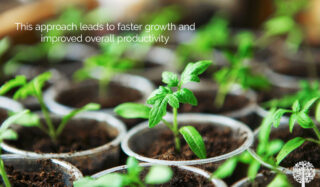

A Widespread Approach
In the years following Sylvain’s research, it has been discovered that the technique works on most plants that produce flowers. The tobacco industry uses it, as do marigolds (a paper is currently being written on this). The Early Topping Technique is being performed on hemp plants used to scrub the soil around the Joseph V. Stalin nuclear power plant.
In China, cultivating small peas in a vertical growing environment using prolonged periods of light in conjunction with ETT has increased yield tenfold. The Chinese researchers growing the peas published a paper based on their findings and Sylvain’s work.
The Vatican has even downloaded Sylvain’s paper to their horticulture archives for further research. As of the writing of this article, the paper has been downloaded 100,000 times in 102 countries. It has also been tested on over 3000 cultivars with a 100% success rate and has been proven to work commercially in numerous agricultural operations.
As a grower, I want the highest product quality and yield. The Early Topping Technique gives my operations the best chance at achieving those goals. I can’t thank Sylvain enough for his research and time teaching my team about it. If you’d like to read the study, please see the link:
rebrand.ly/toppingstudy

by Grow Up Conference | Dec 6, 2024 | Garden Culture Magazine, Media Partners
Technology and artificial intelligence can help us grow better plants! The best part is that many brilliant minds are on the ground and in labs, always working to develop innovative ways to make gardening and agriculture more efficient and sustainable. In our list of 5 Cool Ways Tech and AI Benefit the Environment, we take a quick look at some of the latest technologies being used to clean the air, save the bees, and make the future of growing brighter.
Methane Mitigation
A United Nations Environment Programme report points to methane emissions as the driving force behind climate change, with agriculture being the biggest culprit. Livestock accounts for 30% of methane emissions worldwide! Finding ways to curb these emissions is essential to slowing global warming, with the UN recommending a shift towards plant-rich diets, new protein sources, and leveraging new technology in agriculture. Denmark-based company Ambient Carbon specializes in methane mitigation technology and has heard the call. The company has partnered with Benton Group Dairies in Indiana to test a prototype of its Methane Eradication Photochemical System (MEPS), beginning in 2025. This first-of-a-kind, non-invasive, cost-effective technology strives to remove methane from dairy barn exhaust. MEPS uses a patented gas-phase photochemical process combining chlorine atoms and UV light in a reaction chamber, mimicking how the atmosphere naturally destroys methane. Dairy barn air cycles through MEPS, breaking down methane at its source and preventing it from releasing. Ambient Carbon explains the chlorine atoms are generated onside via saltwater electrolysis. After up to 90% of the methane is eradicated, the chlorine is recycled in a closed system.
Learn more: ambientcarbon.com


Smarter Irrigation
A researcher at Michigan State University (MSU) who has already made a splash in agricultural irrigation has received a $395,000 grant from the USDA to develop a solar power-based technology that improves energy and water use efficiency. Younsuk Dong, Ph.D., will lead the three-year project. Agriculture accounts for more than 80% of all water consumption in the U.S., and irrigation is responsible for half of that. Overwatering plants leads to unnecessary energy and water expenses and increased pest and disease problems. Dong has already created and field-tested the Low-Cost Monitoring System (LOCOMOS), which lowers the initial cost of in-field irrigation sensors and uses a smartphone app. The sensors collect data on soil and leaf moisture and other environmental conditions. This information is sent to growers with a recommended irrigation schedule. With the grant, MSU is designing a solar-powered microinverter, which connects to a solar panel to use electricity for tasks like soft-starting induction motors for irrigation. The research team at MSU believes the eventual energy savings will be significant, resulting in a more sustainable irrigation model for farms everywhere.
Learn more: rebrand.ly/nt73eix


Tracking Bees
We know all about the uphill battle our pollinators face, but where do they go, what do they do, and how do they migrate? Researchers at Oxford University are trying to answer these questions by fitting bees with tiny radar chips to track their movements and help determine why populations are declining. The Biotracks technology includes the smallest and lightest harmonic radar tags ever made that attach to the back of the bee without affecting how they fly. A drone carries a receiver, and researchers on the ground can access a transmitter and camera to learn more about swarm migration, locate nests, and monitor overall bee behavior. With promising field results, researchers say great things are on the horizon as we strive to save our pollinators and the future of food production.
Learn more: ox.ac.uk/news-and-events


Accessing Regenerative Agriculture
We keep hearing about the benefits of regenerative agriculture and how it’s part of the climate solution. However, one of the biggest challenges growers face is the lack of a consistent and acceptable measurement system at scale. How do they know if their efforts and investments are paying off? Leading agricultural data and AI-powered tech company Agmatix has launched RegenIQ, a scalable, data-driven framework that helps drive the adoption of regenerative agriculture. RegenIQ focuses on practical efforts and measurable outcomes, offering farmers insight into optimizing practices, improving crop resilience, and ensuring a stable and sustainable food supply. The technology assesses a farm’s soil health, water use, and local biodiversity and climate, strengthening farm resilience. RegenIQ can evaluate crops growing in particular locations to give farmers knowledge to support and scale regenerative growing practices.
Learn more: regeniq.earth


AI-Altered Plants
It’s no secret that plants and trees are helping fight rising global temperatures by removing carbon from the atmosphere. Scientists with the Salk Institute are helping the plant kingdom do its essential job by optimizing root systems to store more carbon for longer. They’re working on designing climate-saving plants with artificial intelligence software called SLEAP, which tracks the many elements of root growth. This AI was initially used to watch animal movement in labs, but now it’s being applied to measure how deep and wide plant roots grow, which is a long and tedious process without SLEAP. According to phys.org, researchers have since created the most extensive catalog of plant root system phenotypes, accelerating the science behind creating carbon-capturing plants with deep and robust roots that can fight climate change.
Learn more: rebrand.ly/b708f5



by Grow Up Conference | Dec 6, 2024 | Grow Opportunity, Media Partners
Organigram Holdings Inc. says a $90-million deal to buy a cannabis vapes and infused pre-rolls business has made Organigram Canada’s largest recreational pot company by market share.
Organigram’s deal to purchase Motif Labs Ltd. is structured as $50 million in cash and $40 million in Organigram common shares.
Motif shareholders will be entitled to receive an additional $10 million worth of shares, if Organigram achieves certain benchmarks within a year of the transaction closing.
Motif is based in Aylmer, Ont., and its portfolio of brands include Boxhot, Debunk, Boondocks, Rizzlers and Floe State.
Organigram is based in Moncton, N.B., and is behind the Shred, Trailblazer, Big Bag O’ Buds and Edison Cannabis Co. brands.
Organigram says the deal will give it a 12.4 per cent market share and two more facilities dedicated to cultivation and manufacturing of cannabis.
“The highly complementary acquisition of Motif establishes Organigram as Canada’s largest cannabis company by market share and accelerates our vision to be a leading cannabis company across all major categories,” Organigram CEO Beena Goldenberg said in a statement.
This report by The Canadian Press was first published Dec. 6, 2024.
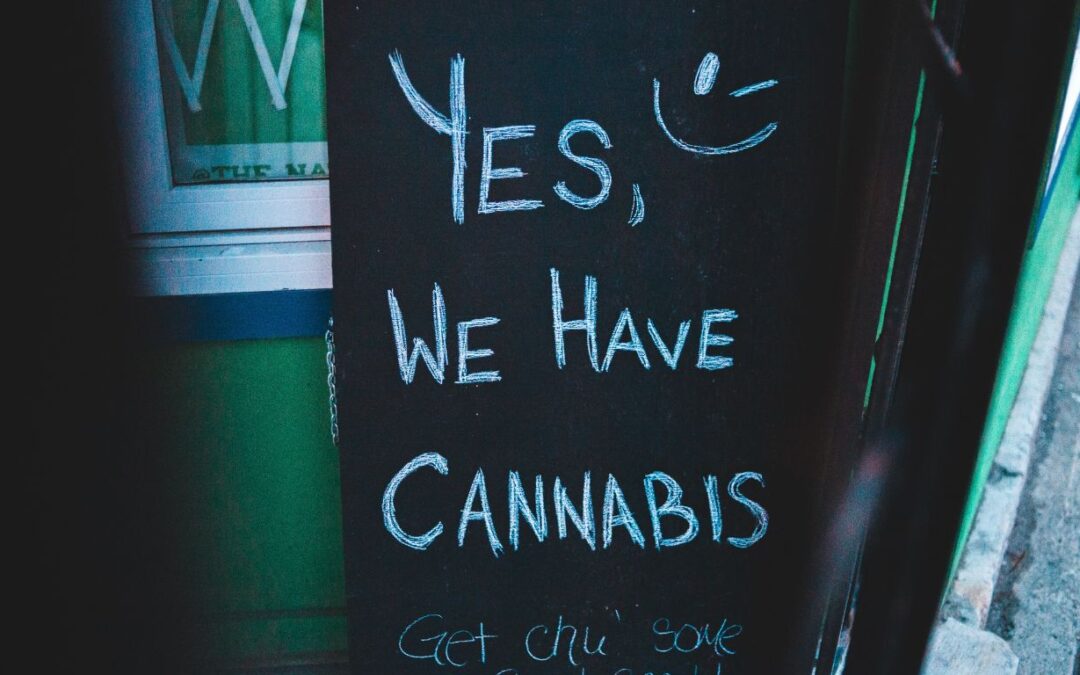
by Grow Up Conference | Dec 6, 2024 | Media Partners, Stratcann
The vast majority of cannabis purchases in Canada continue to come from legal sources, according to Health Canada’s annual cannabis survey.
The amount commonly spent per month on cannabis decreased from $73 in 2018 to $63 in 2024 but was unchanged from 2023.
The 2024 Canadian Cannabis Survey highlights ongoing trends among cannabis consumers in the country, documenting not only sources of cannabis but also topics such as consumption habits and perceptions of cannabis risks.
Smoking cannabis remains the most common way Canadians consume the product, but the proportion who report smoking cannabis has declined by twenty percentage points since legalization began.
In 2018, 89% of cannabis consumers reported smoking cannabis, a number that has declined to 69% in the last two years of the federal government’s annual Canadian Cannabis Survey.
Eating cannabis products was the second most common mode of consumption (57%, up from 43% in 2018) according to data collected from April 4 to July 2, 2024, while vaporizing (including vaping dried cannabis and/or liquid or solid cannabis extracts) accounted for 37% of reported consumption.
The number of people who reported getting their cannabis from a legal source in the first half of 2024 remained the same as the previous year at about 72%, up from just 37% in 2019.
Only 3% of respondents in the survey reported getting their cannabis from an illegal source, while 15% said they obtained their cannabis from a social source like a friend or family member, and 2% reported getting their cannabis from a storefront located in a First Nations community. Such stores generally operate outside the scope of provincial licensing regimes and have proliferated in recent years.
Those who reported using cannabis at least once in the previous 12 months increased from 22% in 2018 to 26% in 2024, but this number was unchanged from 26% in 2023. Similarly, those who reported using cannabis at least once in the past 30-day cannabis increased slightly from 15% in 2018 to 17% in 2024 but was unchanged from 17% in 2023.
Only 6% of the population in Canada reported using cannabis on a daily or almost daily basis, up slightly from 5% in 2018 but unchanged from 6% in 2023. These daily or nearly-daily users represented 24% of all people in Canada who reported consuming cannabis in the past 12 months, relatively unchanged from 25% in 2018 and 23% in 2023.
The number of people who reported using cannabis before driving (18%) increased slightly from the year prior (15% in 2023) but is still lower than the 27% who reported doing so in 2018. This included 16% who reported driving within 2 hours of smoking or vapourizing cannabis and 10% who reported driving within 4 hours of ingesting cannabis.
Of those who reported using cannabis in the past 12 months, 78% said they believe that cannabis use impairs one’s ability to drive, while 13% responded that it depends, and 6% responded that it did not impair one’s ability to drive.
Recent figures from the Canadian Community Health Survey released in October showed that the population of those over 18 in Canada who reported using cannabis in the past 12 months and those who reported that they had used cannabis daily or almost daily in the past 12 months declined in 2023 after four years of annual growth.
Cannabis sales in Canada also appear to reflect these self-reported figures, with sales beginning to level out after five years of year-over-year growth.
The Canadian Cannabis Survey was launched in 2017 and has been conducted annually since 2018 to create a better understanding of cannabis use and consumption habits in Canada in the wake of the legalization of non-medical cannabis in October 2018.
Related Articles

by Grow Up Conference | Dec 6, 2024 | Media Partners, Stratcann
A judge has approved a motion to extend the stay of proceedings between Final Bell and BZAM, and has been again postponed, this time to January 13, 2025. The court ruled that Final Bell’s equity claim falls behind the claims of all other creditors.
The court also approved a motion to authorize the bankruptcy filing of cannabis cultivator 9430-6347 Québec Inc. to file an assignment in bankruptcy. The company’s federal cannabis licence was listed as revoked on request earlier this year.
The monitor in the case involving the dispute between BZAM and Final Bell Holdings, Cortland Credit Lending Corporation, had asked the court for a declaration that the claims of Final Bell against BZAM are subordinate to Cortland’s claims against BZAM.
Cortland argued, and the court agreed, that the trial of Final Bell’s claim will likely be moot “as there will be no cash proceeds available to which the constructive trust could attach.”
Final Bell had opposed that motion and argued that it should have been entitled to the opportunity to prove its fraudulent misrepresentation claim. Final Bell says that BZAM made fraudulent misrepresentations to it that Final Bell relied on when the company entered into a share exchange agreement with BZAM. It also alleged that Cortland was aware of those fraudulent misrepresentations.
The judge rejected these claims, siding with the monitor.
The case surrounds BZAM’s announcement in late 2023 that it would be acquiring Final Bell, which was quickly followed by BZAM filing for and receiving CCAA protection a few months later in February 2024. Final Bell argues the CCAA filing contradicts assurances BZAM had given the company before signing the agreement.
That deal saw BZAM acquiring Final Bell Canada by issuing $13.5 million in equity in BZAM and granting Final Bell $8 million in promissory notes. At the time, the deal was said to make BZAM the fifth-largest Canadian LP.
Final Bell reacted to BZAM’s announcement at the time by saying it believes that the company’s initiation of CCAA Proceedings constituted an “improper use of creditor protection legislation to evade its creditors, defraud shareholders, and facilitate a related party going private transaction at an unjustified discounted value in order to circumvent a customary going private transaction requiring shareholder and creditor approval.”
“There is a second principal reason that Final Bell’s claim, even if ultimately successful, cannot rank in priority to the super priority DIP Lender’s Charge of Cortland,” writes the judge. “The claim of Final Bell is an “equity claim” as defined in the CCAA. As such, the claim of Final Bell ranks behind the claims of all creditors, not just creditors with court-ordered priority charges.”
“In asserting its late-breaking claim for a constructive trust, Final Bell is seeking to elevate what is inescapably an equity claim into a claim of not only a creditor, but a first-ranking creditor with priority over the Court-ordered super priority DIP Lender’s Charge. Such is expressly not permitted under the CCAA, within which the definition of “equity claims” should be given an expansive interpretation.”
However, the judge was also careful to note that he was not making any determination about the merits of Final Bell’s fraudulent misrepresentation claim against BZAM, but that if such a claim were successful, there would be no assets left over to address any findings in their favour.
As Cortland’s motion was successful, it is entitled to its costs of $150,000 inclusive of fees, disbursements, and HST, to be paid by Final Bell within 30 days of December 2, 2024.







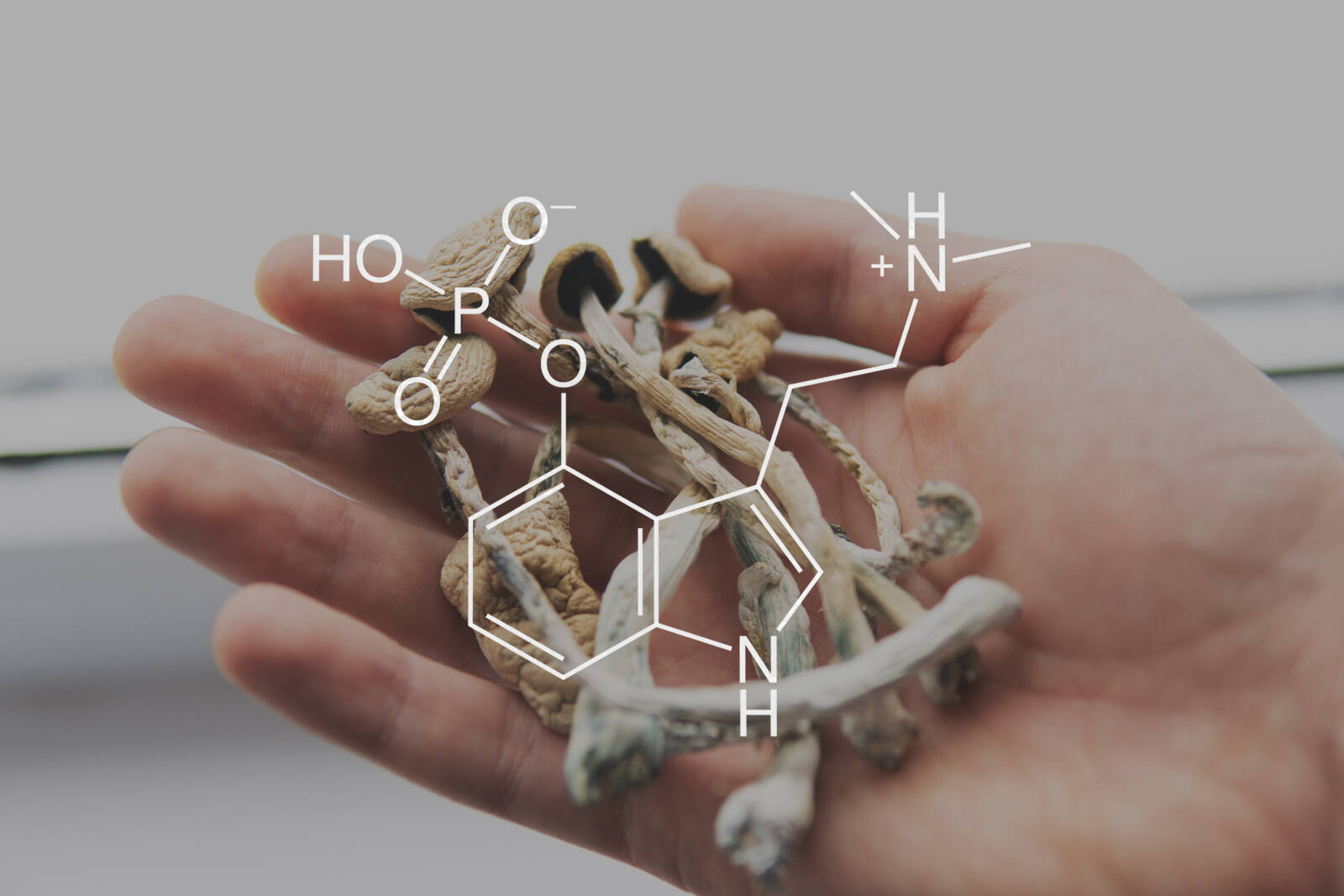

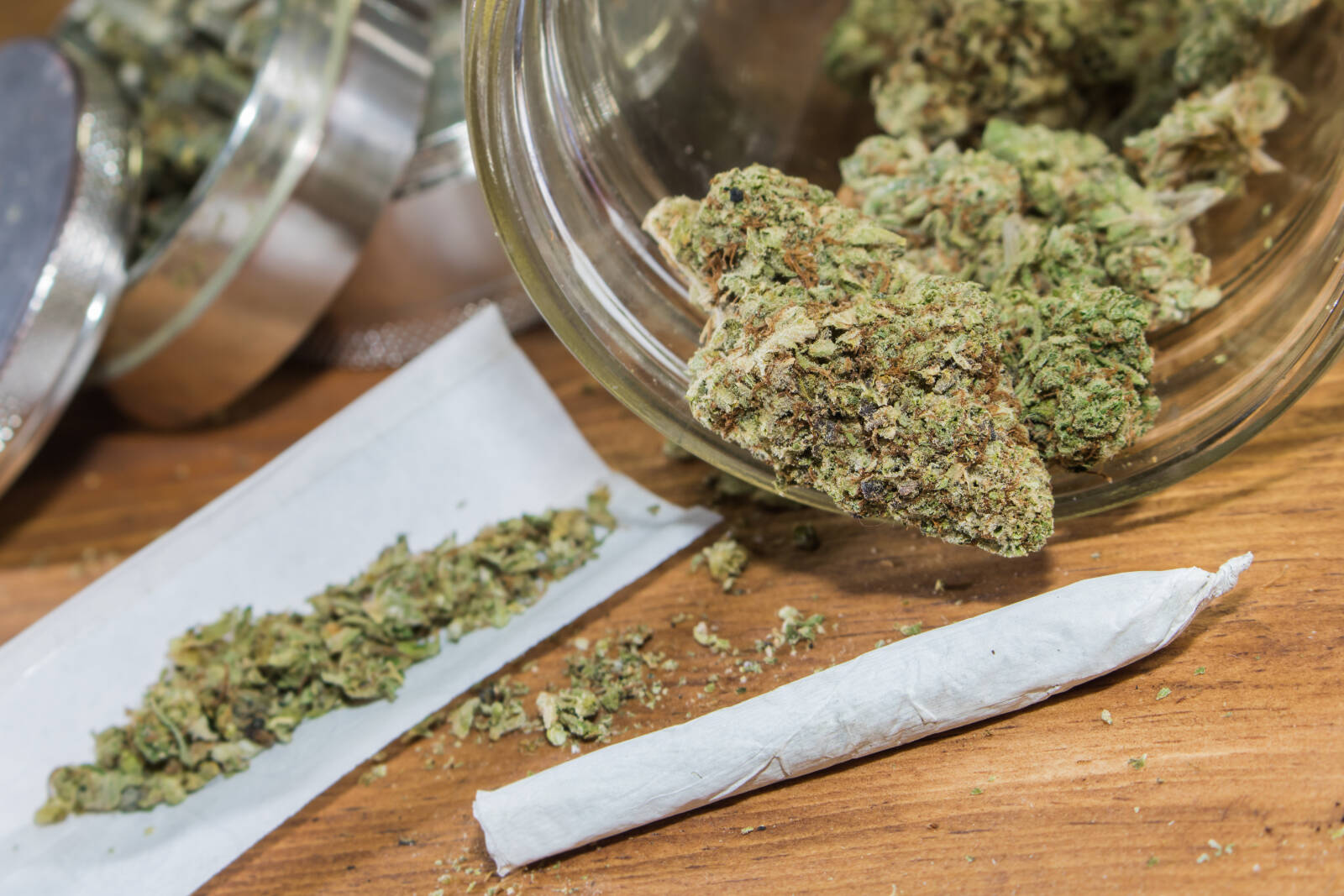



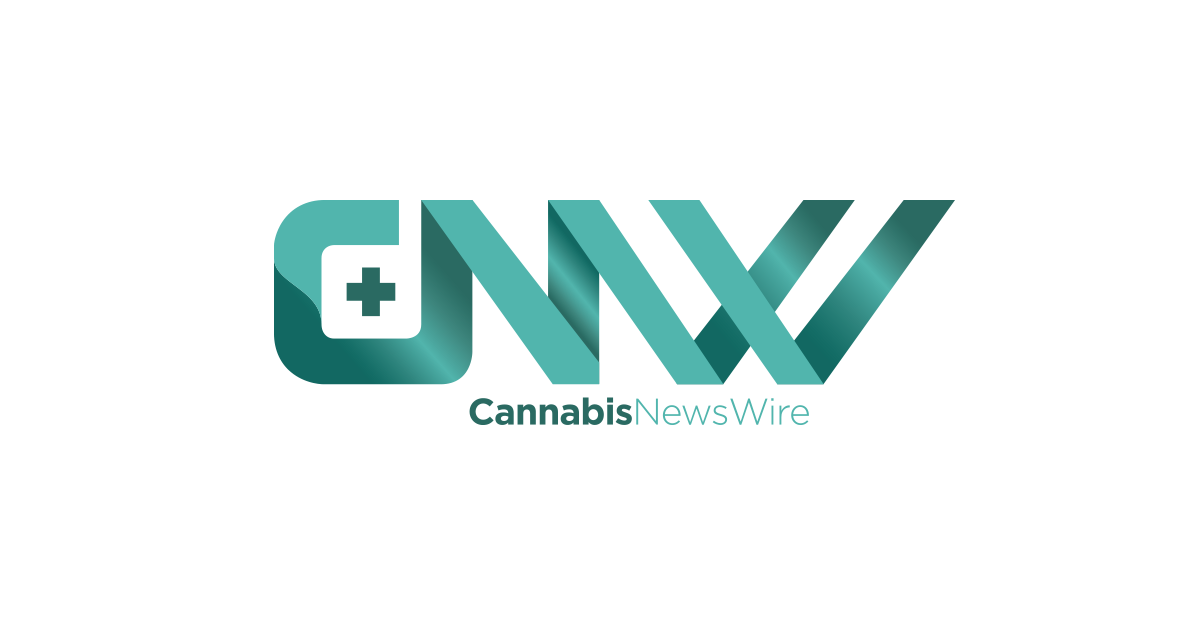







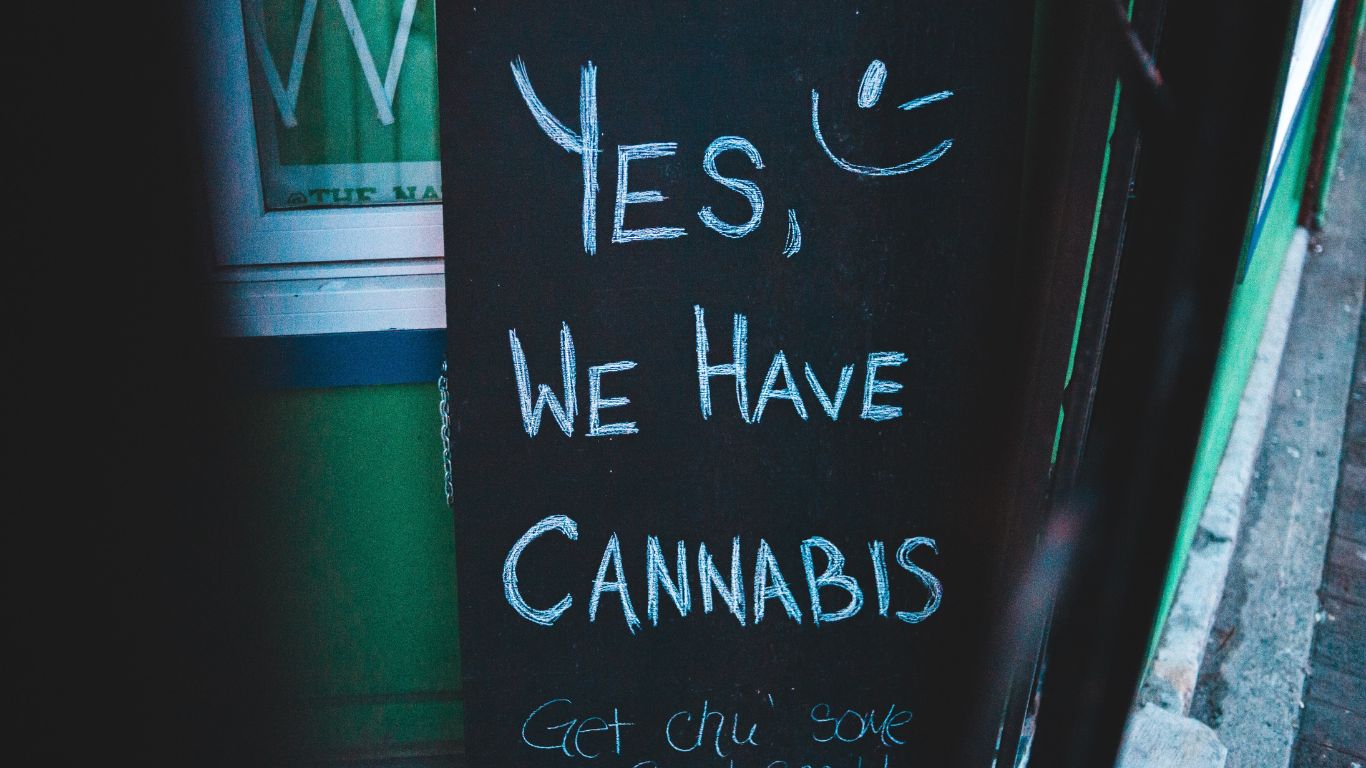


Recent Comments